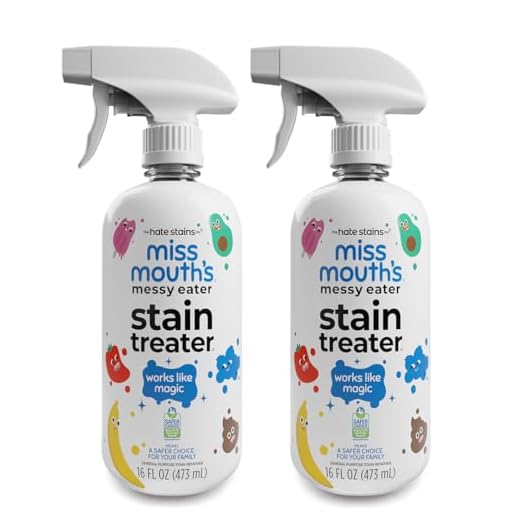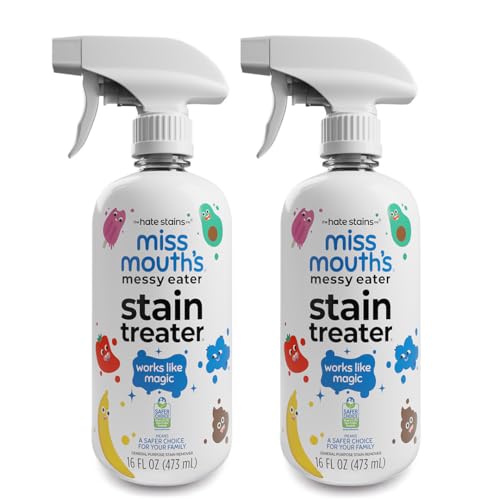

Act swiftly: blot the affected area with a clean cloth or paper towel to absorb excess moisture. Avoid rubbing, as this can spread the liquid and deepen the mark.
Next, sprinkle salt or baking soda generously over the area. These natural absorbents help draw out the pigment. Let it sit for about 10-15 minutes before gently brushing it off.
Prepare a solution of cold water and a small amount of dish soap. Using a clean cloth, dab this mixture onto the blemish, continuing to blot until the discoloration begins to lift. Rinse with cold water to remove any soap residue.
If the mark persists, consider applying a mixture of hydrogen peroxide and dish soap in equal parts. Apply this carefully and allow it to sit for a few minutes before rinsing thoroughly. Always perform a patch test on an inconspicuous area first to ensure no damage occurs.
Finally, wash the fabric as per care instructions, avoiding heat until you are certain the blemish is entirely gone. Heat can set the mark, making it nearly impossible to remove.
Removing Burgundy Accents from Light Fabric
Act quickly to treat the blemish on your fabric. Begin by blotting the area with a clean cloth to absorb excess liquid. Avoid rubbing, as this can spread the pigment further into the fibers.
Materials Needed
- Cold water
- White vinegar
- Dish soap
- Hydrogen peroxide
- Clean cloths or paper towels
Steps to Follow
- Mix equal parts of white vinegar and dish soap in a bowl. This solution effectively breaks down the color.
- Apply the mixture directly to the affected area. Let it sit for 30 minutes to penetrate the fibers.
- Afterward, rinse with cold water. This helps to lift the residue.
- If any traces remain, use a combination of hydrogen peroxide and water in a 1:1 ratio. Test this on an inconspicuous area first.
- Finally, wash the fabric as per its care label instructions, preferably in cold water.
Always air dry the material instead of using a dryer, as heat can set any remaining discoloration.
| Material | Function |
|---|---|
| White Vinegar | Neutralizes pigments |
| Dish Soap | Breaks down stains |
| Hydrogen Peroxide | Further lifts color |
For more culinary insights, check out this guide on how to cook abalone hong kong style.
Immediate Steps to Take After Staining
Act quickly. Blot the area with a clean cloth or paper towel to absorb as much liquid as possible. Avoid rubbing; this can push the liquid deeper into the fibers.
Next, sprinkle salt or baking soda directly onto the affected area. These substances can help draw out the liquid from the fabric. Allow it to sit for a few minutes before gently brushing it off.
Cold Water Rinse
Rinse the fabric under cold running water from the backside of the stain. This helps to push the residue out rather than further into the fabric’s fibers.
Prepare for Treatment
After rinsing, do not let the fabric dry. This could set the mark. Instead, treat the area with a specialized stain removal solution or a mixture of dish soap and hydrogen peroxide. Apply it gently to the fabric.
Once the treatment is applied, allow it to sit for at least 30 minutes before washing. Follow up with a wash cycle using the hottest water safe for the fabric.
By acting fast and using these methods, you increase the chances of complete removal drastically.
Choosing the Right Cleaning Solution
Select a cleaning solution that matches the fabric type and the nature of the discoloration. Options include commercial stain removers, natural alternatives, and common household items.
Commercial Stain Removers
- Opt for enzymatic formulas, effective at breaking down organic matter.
- Check labels for compatibility with delicate fabrics.
- Consider pre-treatment sprays designed for tough discolorations.
Natural Alternatives
- Baking soda mixed with water creates a paste that can lift marks.
- White vinegar effectively neutralizes acids present in the stain.
- Lemon juice acts as a natural bleaching agent, especially with sunlight exposure.
Always test any cleaning solution on a hidden area first to ensure it won’t damage the fabric. Avoid harsh chemicals that could lead to further discoloration or fabric degradation. Choose wisely to maintain the integrity of your attire while removing unwanted blemishes.
Applying the Stain Removal Technique
Begin by placing a clean white cloth or paper towel beneath the fabric to absorb excess liquid. Avoid rubbing, as this can spread the pigment further. Gently blot the area with another clean cloth, allowing it to soak up the moisture without pushing it deeper into the fibers.
Next, prepare a mixture of cold water and a mild detergent. Using a soft-bristled brush or cloth, apply this solution to the affected area. Work from the outside toward the center of the mark to prevent spreading. Rinse thoroughly with cold water, ensuring no detergent residue remains.
If the discoloration persists, create a paste using baking soda and water. Apply it to the blemish, letting it sit for about 30 minutes before rinsing. This method can lift stubborn residues effectively.
For persistent issues, consider using a specialized fabric treatment. Always test any product on a hidden area first to ensure it won’t cause further damage. Follow the instructions carefully for optimal results.
Finally, launder the fabric as per the care instructions. Air-dry instead of using a dryer, as heat can set any remaining traces. Repeat the process if necessary, as early intervention increases the likelihood of complete removal.
Washing and Drying Considerations
Always check the care label on your fabric before washing. Use cold water to prevent any potential setting of remaining discoloration. A gentle cycle is preferable; harsh agitation can damage fibers.
Consider pre-soaking the item in a solution of cold water and a suitable detergent for 30 minutes prior to the wash. This step can aid in lifting any lingering pigments.
After washing, avoid using a dryer. High heat can permanently fix any remaining traces. Instead, air dry the garment by laying it flat in a shaded area away from direct sunlight.
If stains persist after washing, refrain from re-drying. Treat the area again and repeat the washing process. Patience is key; multiple treatments may be necessary for complete removal.
Alternative Methods for Stubborn Stains
For those challenging marks that resist conventional approaches, consider these unique solutions:
Club Soda Technique
Club soda effectively lifts discoloration. Apply it directly onto the affected area. Blot with a clean cloth, ensuring you absorb the liquid without rubbing, which may spread the issue.
Salt and Lemon Juice
- Mix equal parts of salt and lemon juice to form a paste.
- Apply the mixture onto the spot and let it sit for about 30 minutes.
- Rinse with cold water, then check for any remaining trace.
Baking Soda Paste
Create a paste using baking soda and water. Spread it over the mark, allowing it to dry completely before brushing off. This method may require multiple applications for stubborn results.
Hydrogen Peroxide Blend
Combine hydrogen peroxide with dish soap in a 2:1 ratio. Apply directly to the area, letting it sit for a short period before rinsing thoroughly.
Professional Products
- Consider specialized stain removers formulated for tough discolorations.
- Follow the manufacturer’s instructions for optimal results.
Experimenting with these alternative methods can lead to success, especially when standard techniques fall short. Always test any solution on a small, inconspicuous area first to avoid damage.
Preventing Future Stains from Red Beverages
Always treat your garments with a protective spray specifically designed for fabrics. This creates a barrier against spills, making it easier to wipe away unwanted liquids. Look for products labeled as stain repellent.
When enjoying a glass of your favorite beverage, opt for darker shades or pattern designs on your clothing. These choices can camouflage potential mishaps and make them less noticeable.
Consider placing coasters or napkins under glasses during gatherings. This simple practice minimizes the risk of accidental spills on your attire.
At home, keep cleaning supplies readily available. Having club soda or a stain-removal pen nearby can help address minor accidents before they escalate into larger problems.
When dining out, select areas where spills are less likely to occur. Sitting at a table rather than a bar can reduce the chances of an unintentional splash.
If you frequently host events, inform your guests about drink precautions. Encourage them to be mindful of their glasses to help maintain a tidy environment.
Regularly inspect your garments for any existing discolorations and treat them promptly. This proactive approach can prevent stains from becoming permanent.







